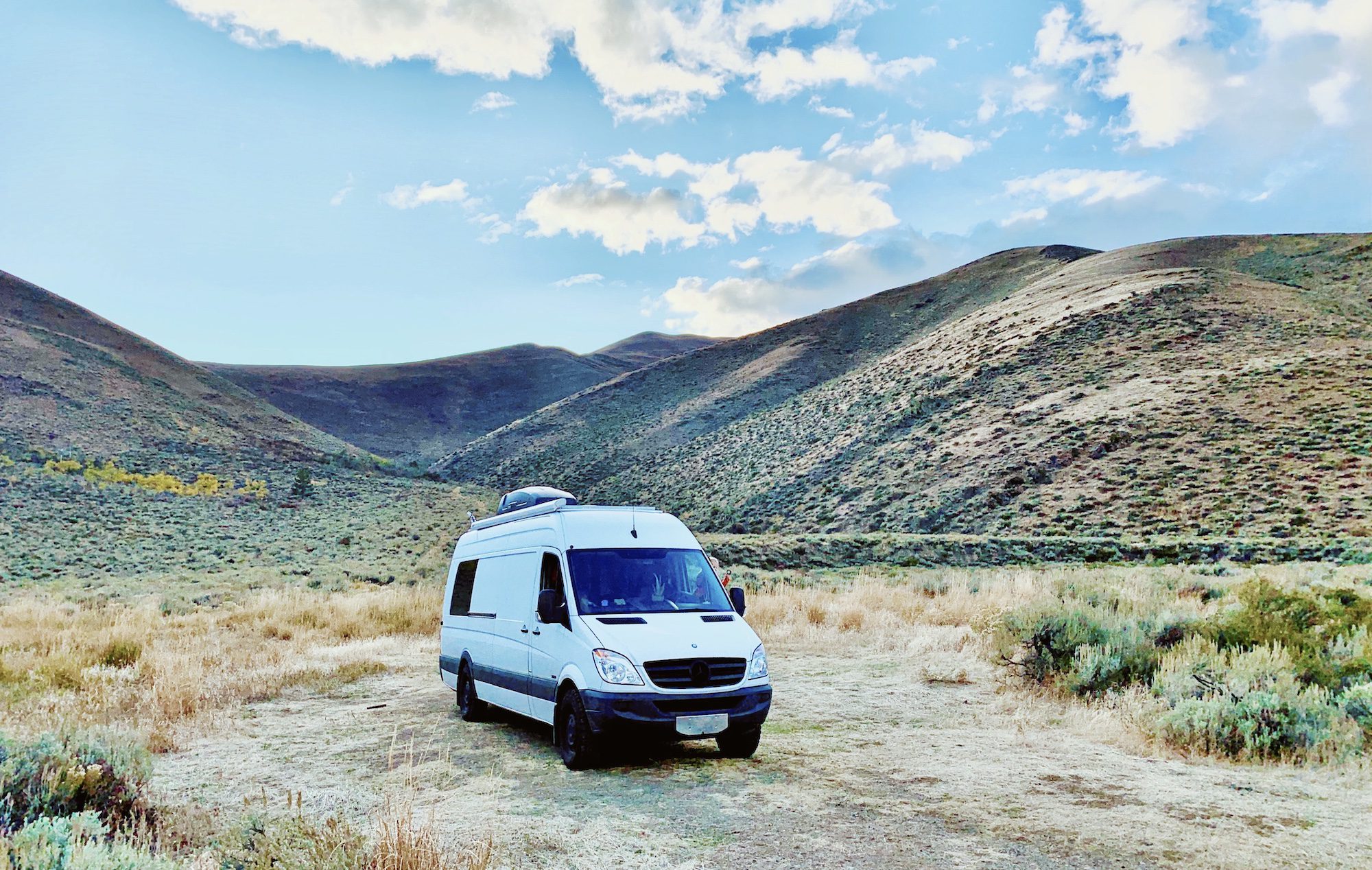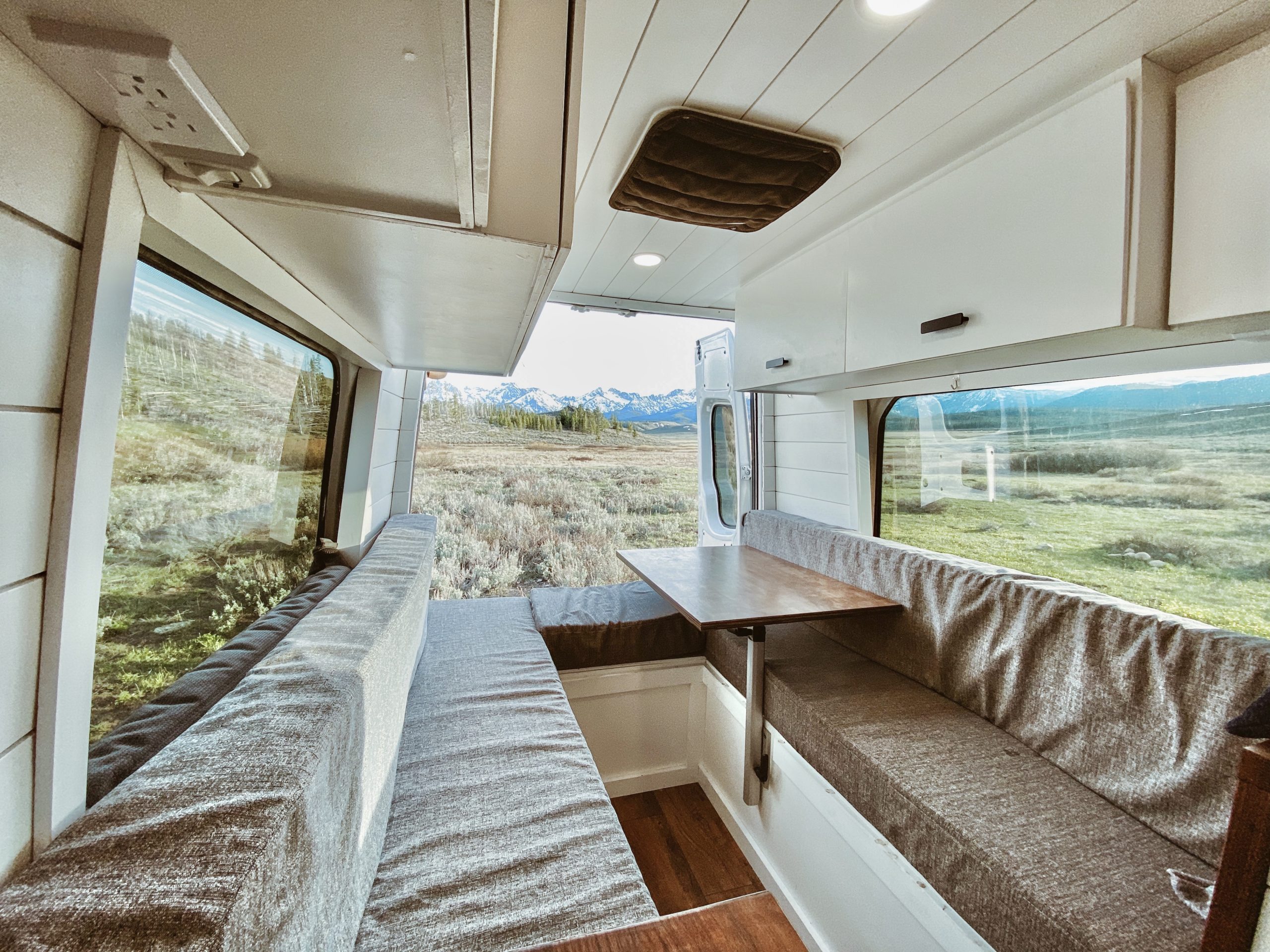
Summit of Freedom
Camper vans and recreational vehicles saw a burst of popularity this summer, as the coronavirus pandemic shut down popular family vacation destinations like Disney World and made the very idea of staying in a hotel seriously unappealing. As it turns out, once you’ve enjoyed a vacation on the road—no flight to catch, no checked baggage charge, a full stash of your favorite snacks, beautiful wide-open spaces available to roam in—it’s easy to imagine doing it again and again.
But here’s the rub: While RVs have long been popular homes on wheels, the unavoidable reality is that these behemoths are a pain to drive and store.
On the other hand, a camper van is the perfect vehicle for weekend getaways, lengthy road trips, and even full-time tiny-home living—and you can customize your own.
After having built out a custom van a few years back, and swapping stories with other “vanlifers,” I know a thing or two about the long, sometimes messy process. Here’s an overview of everything you need to know before converting a van into the tiny home of your dreams.
Set a budget
In setting a budget, consider how you actually want to use the van. Do you need something just for weekend trips, or are you looking to move into it full time? Depending on the end use, your build type and thus your budget will vary quite a bit. Here are some rough estimates of what you might expect to spend.
- Basic build, less than $30,000: A van build like this would involve purchasing an older, used van (for $20,000 or less) and then spending a few thousand dollars adding a bed frame and interior decor. This type of build would likely not include any plumbing or electric, and would involve building the van yourself.
- Midrange build, up to $60,000: Most people who plan on traveling for any length of time tend to opt for this plan, since it allows for a more sophisticated—albeit still reasonable—build in a newer van. You should plan on spending up to $30,000 on a (perhaps lightly used) van, and $20,000 to $30,000 more to get the interior, plumbing, and electric features you want. This van would also be self-built to save money on labor costs.
- Upper-range build, up to $130,000: If you have the budget to spend the big bucks, then you have options for luxe amenities, including top-of-the-line plumbing and electric systems and even an experienced professional to help you design and build your dream van.
Buy a van
mekcar/iStock
Once you’ve decided on a build and budget, the next step is to start shopping for your vehicle. Lightly used vans can be found on Craigslist, at car dealerships, and on sites like Cars.com and Autotrader. Many car rental companies have huge inventories of lightly used cargo vans, and from my experience, a lot of them are in much better condition than those being sold by the dealerships.
Whatever van you choose to buy, be sure to test-drive it, check for recalls on the model, and get a car history. Since you’ll be investing a lot of money to build it out, it’s important to start with a van that’s in good condition—even if that means spending a bit more.

Summit of Freedom
Design the interior
You have your budget and your van, now what? It’s time to decide exactly how you’ll transform that tiny space into your dream home on wheels.
“When planning out a van build, it’s important to consider what you want out of it,” says Orry Blackwood, who with his wife runs the van-conversion company Summit of Freedom. “Are you planning to live full time in your van, or are you a weekend warrior? That gives an idea for how much storage and what amenities are needed. Then it boils down to hobbies and preferences.”
If you plan to ski, surf, bike, or all of the above, that will help determine what kind of storage you need. Geographical areas will help determine the amount of heating or cooling needed. Beyond those basics, it’s also important to consider what kind of interior layout works best for you. For example, do you want a fixed bed or a converting table-to-bed space?
“Some people enjoy having a lounge area, while others really love the ease of not having to break down a bed every day,” Blackwood says.
Finally, don’t forget about the electrical and plumbing systems. Think about where you’ll store the big-ticket items like your batteries and water tanks. Since these are often some of the heaviest components of the build, you’ll want to place them strategically to keep the van balanced. You’ll also want to make sure that whatever materials you use to build won’t put your van over its weight capacity.
Summit of Freedom
Build it out
Once you have a rough idea of layout in mind, it’s time to start on the build. Generally you’ll want to start by mapping out any windows, vents, or fans you plan to install. After that comes insulation and framing, followed by electrical and plumbing, and finally, interior decor.
This list might sound simple enough, but many of these steps often overlap and take weeks to complete.
“Everything you want to build will take longer and likely cost more than anticipated,” says van life aficionado Alexandra Napoli, of FnA Van Life. “We would come into a day of construction with seven items to get done and only accomplish three because nothing is level, nothing is square, and everything is just a bit more complicated than you realize. You’ll find yourself running back and forth to the hardware store all day long.”
And speaking of time, you should also start thinking about how much of it you can devote to the build.
While some people are able to spend 40 hours a week building out their vans, most of us are still balancing (at least) part-time jobs. My partner and I planned on spending three months, but that quickly turned into seven—considered fairly average for a first van build. (Unsolicited relationship advice: Make sure you really like whoever you’re building with.)
Another thing that might slow you down: How set up is your workshop for this?
“One of the biggest factors that impacts a van build is the shop setup or lack thereof,” says Blackwood. “If you have to unpack your equipment or work area at the beginning of each day and pack it up at the end, you’re going to be looking at a longer time frame.”
You’ll also want to think about where you’ll be getting all the tools needed for the job. Since these can easily cost you thousands of dollars and be cumbersome to store later, now’s the time to start checking with friends and family to see if they’re willing to let you borrow any of their tools.
Larissa Runkle
The bottom line
It’s fairly easy to see why some people choose to pay a professional to build out their van.
But if you aren’t deterred by the challenges that go into a van build, then there are a lot of resources out there to help—including this step-by-step guide from Parked in Paradise. And hey, no matter how you get there, the final result will be worth it.
The post The Open Road Is Calling: Here’s How To Convert a Van Into a Tiny Home appeared first on Real Estate News & Insights | realtor.com®.
No comments:
Post a Comment